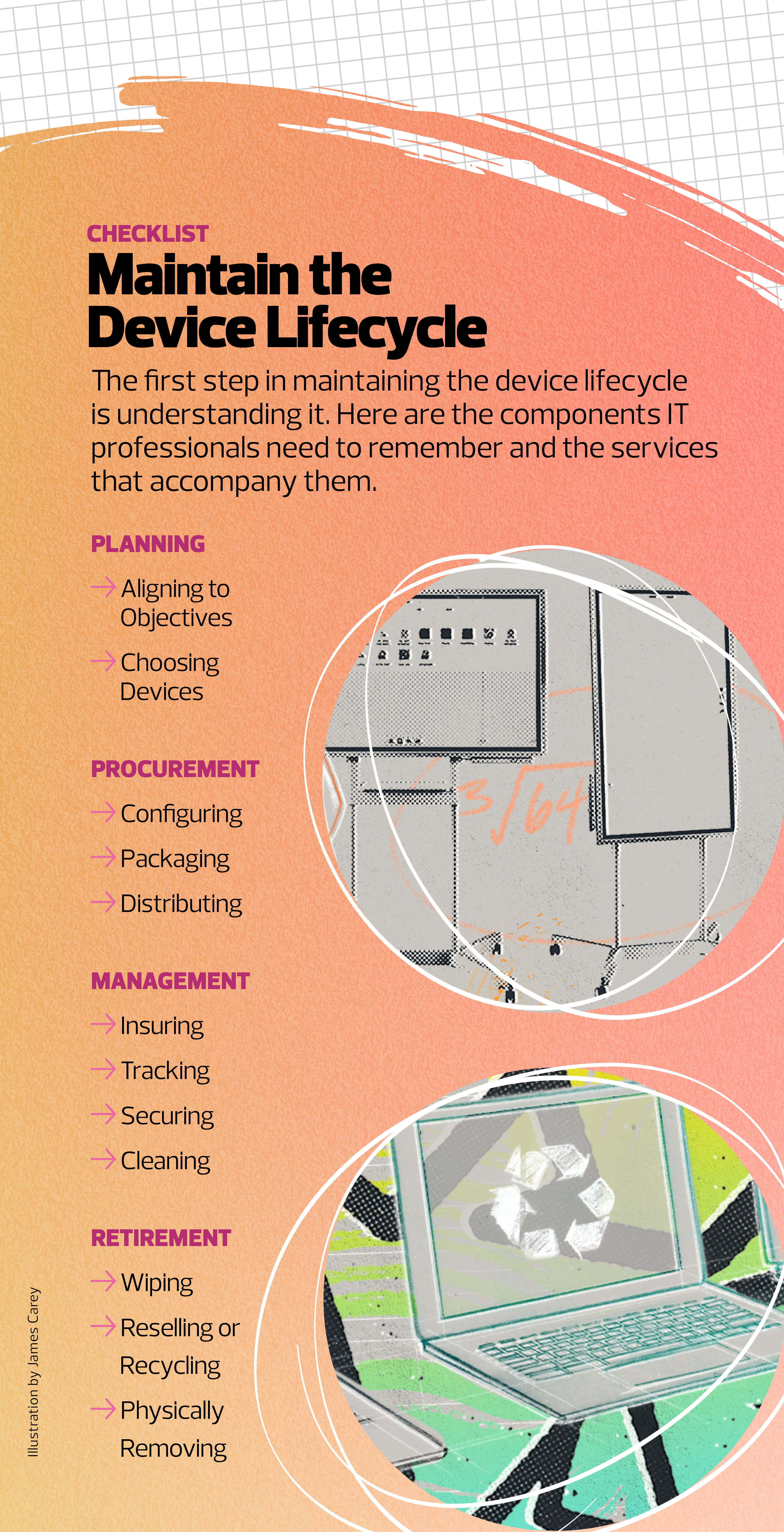Distributing Devices
Some schools don’t have the space to store and distribute thousands of student devices. With last-mile delivery services, configured devices are delivered straight to student users. This saves IT leaders the logistical headache of serving as the middleman, giving teams more time back to focus on other upgrades or installations.
Manage the Device Ecosystem Thoughtfully to Increase ROI
Once students have their laptops and tablets, K–12 IT teams must keep up with device care and maintenance. In this management phase, proper care will help extend the device lifecycle, increasing the district’s return on investment for their one-to-one program.
Insuring Devices
Insuring devices gives schools peace of mind about leaving the technology in students’ hands. Companies such as Worth Ave. Group can help protect laptops and tablets against damage and theft, ensuring schools won’t blow their budgets on pricey repairs or replacements at the end of each school year.
Tracking Devices
Another way to prevent costly end-of-year replacements is through device tracking. Absolute Software offers device tracking programs that can show an IT admin exactly where a device is being used if it’s been lost or stolen. The company also has options to remotely shut down or wipe devices that are reported stolen, preventing any possible data breaches.
Securing Devices
Managing the device ecosystem means managing the applications users are downloading and accessing on their devices. CDW’s experts can work with schools to find the right security tools for their organization. Companies such as ManagedMethods, for example, can detect and prevent users from accessing restricted applications on school technology. ManagedMethods is designed specifically for K–12 education environments and works across both Google and Microsoft operating systems.
LEARN MORE: How does third-party risk impact K–12 learning environments?
Cleaning Devices
When devices are turned over to IT teams at the end of the school year or after graduation, staff members are tasked with cleaning them. Students may leave their tech covered in questionable substances, but even if the devices are in decent condition, individually cleaning laptops and tablets is a big ask for a small IT department. With the help of service professionals from CDW, districts can outsource the physical and digital scrubbing of devices.
Part of securing devices is properly wiping the hard drive to set them up for new users. Districts don’t want to risk data privacy violations by improperly clearing the data from a former student’s equipment.
Retire Old Devices to Make Room for New Purchases
At the end of a device’s lifecycle, it must be retired. To avoid burying devices in a storage closet that can quickly become a device graveyard, take advantage of device removal services that will help K–12 IT departments decommission old laptops and tablets they no longer use.
Wiping Devices
When reconfiguring a device, a school may choose to leave district programs and software downloaded. But when it comes to decommissioning a device, IT teams will want to wipe it completely.
Reselling or Recycling Devices
When choosing a recycling partner, make sure the company that hauls the devices away is reputable. CDW works with companies such as RePower, which will pay schools for their old devices based on the condition of the hardware and the market. If school leaders don’t agree on the sum RePower offers, they can get their devices back. Recycling benefits not only the school district but also the communities where the technology is donated or resold at an affordable price.
Physically Removing Devices
Just as schools may have struggled to store thousands of new laptops, they likely don’t have the space to store retired tech. If districts don’t choose to recycle their devices and have them removed as part of that process, they can work with partners like CDW to have the equipment taken away, freeing up space for the incoming tech refresh.
UP NEXT: New classroom technology reignites excitement in K–12 educators.













